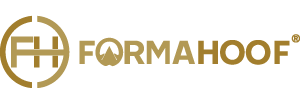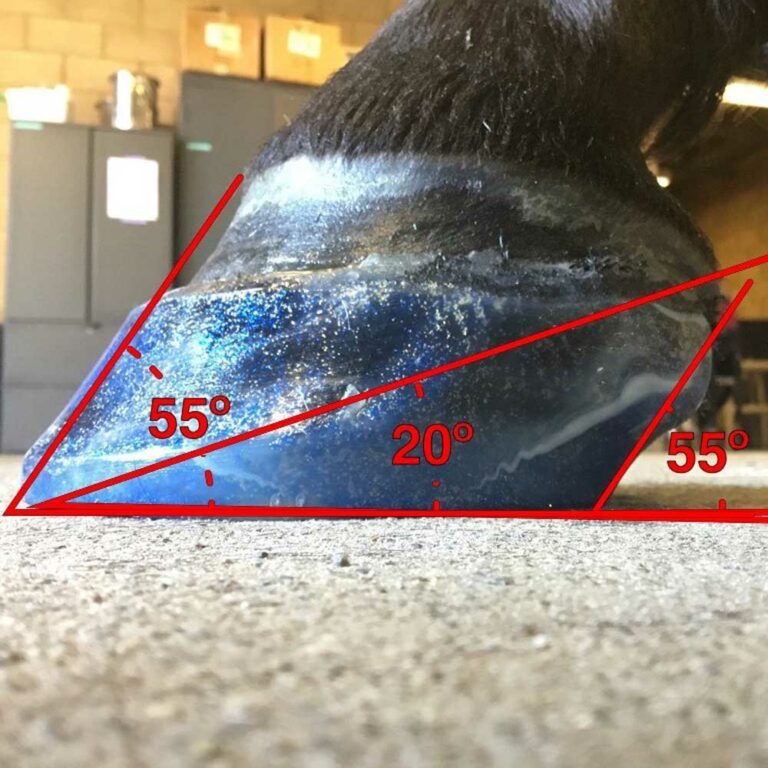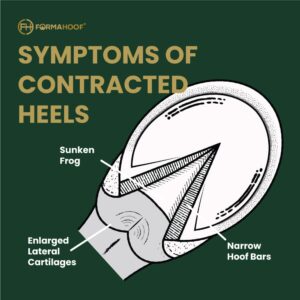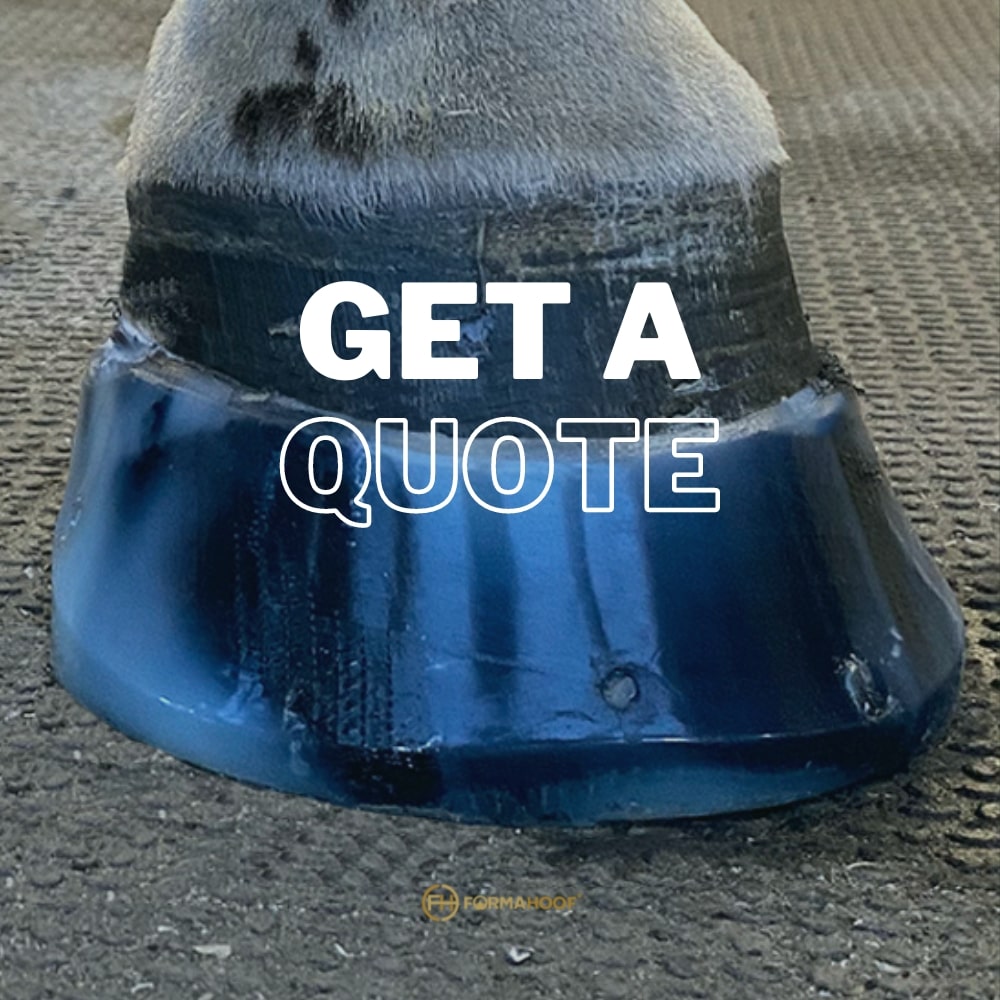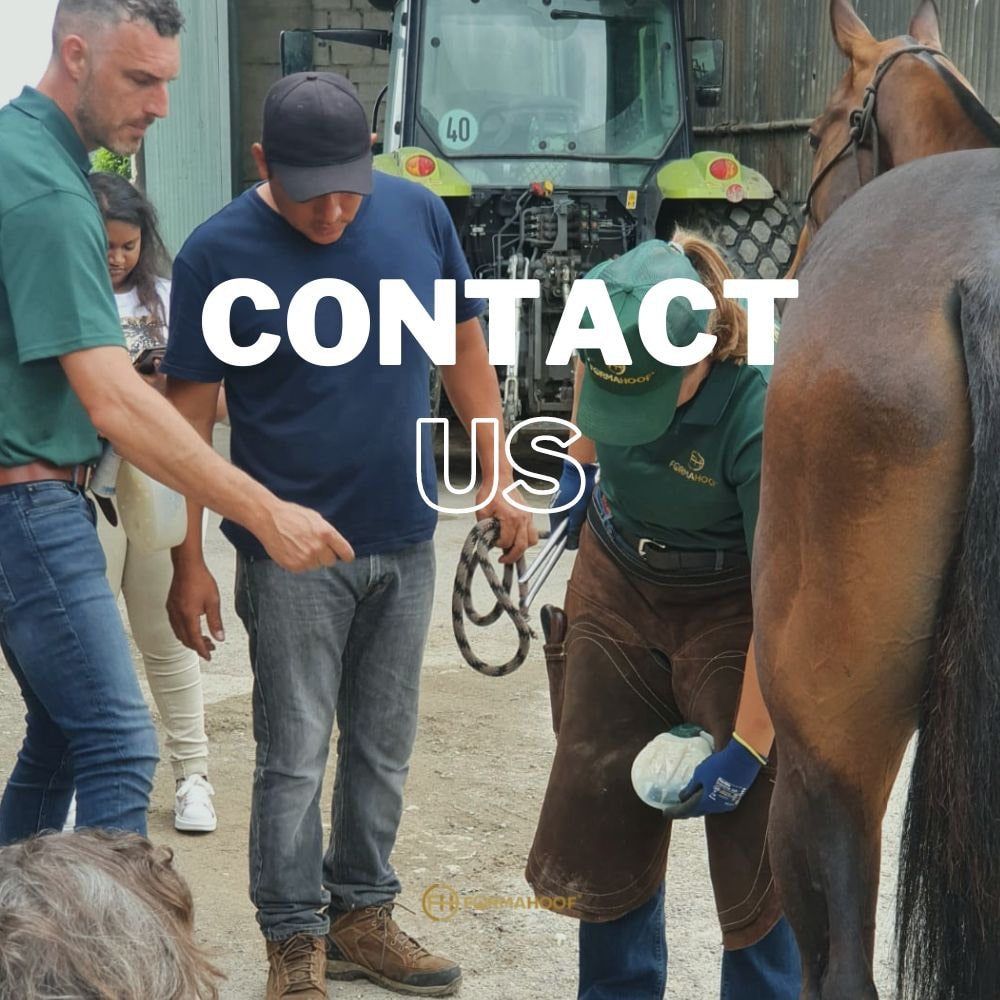Horse hoof angles play an essential role in assessing the horse’s overall health and soundness. By measuring the angle of the horse’s hooves, it is possible to check for any abnormalities that might affect the animal’s posture, locomotion, and ability to bear weight. Learn what to look for and how to evaluate your horse’s hoof angles here.
What Hoof Angles May Tell You About Your Horse And How FormaHoof Can Help To Improve Alignments
As a horse owner, it is important to be educated about hoof health and to keep your eyes open for any abnormalities between trimming/shoeing cycles. These abnormalities may be cracks, brittle feet, thrush, or other minor problems you observe when checking your horse’s feet.
Something that doesn’t happen overnight, or even within the short term, is a change in hoof angles. However, angles can be an indicator of health problems. “No hoof, no horse” is 100% true as without a healthy hoof, your horse’s overall health can be severely affected.
Improperly trimmed and unbalanced feet are not only a visual problem but also affect the horse’s entire musculoskeletal health and hooves that are not looked after or corrected may cause pain and lameness if left uncared for.
Did you know?
Musculoskeletal health refers to the performance of the locomotor system, comprising intact muscles, bones, joints and adjacent connective tissues.
Common Hoof Pathologies And Angles
Looking at the image below, we have 8 different hoof types, shapes, and angles. While ‘aligned’ shows you the ‘ideal’ scenario, many will be familiar with one or more of the other types: clubfoot, long toe and low heels, negative palmer or plantar, laminitis, founder, or high-low syndrome. How a horse’s foot and angles will be aligned will depend on every individual horse and the exercise or discipline they are active in. So, what is normal? A question that is not easy to answer, but over the years a standard for hoof angle measurements is widely discussed as the norm for a healthy hoof.

Note: Image for illustration purposes only, these may not be anatomically correct- the purpose is to show various bony column alignments that predispose hooves to pathological changes to aid in developing a corrective trim process. (Image Source)
Generic Dorsal & Hairline Angles
While not every horse will have the same alignments and not every angle will suit every horse, the ideal dorsal angle of the front wall of the hoof to the ground is roughly 50-55 degrees. The angle of the hoof should match the angle of the dorsal surface of the pastern, resulting in a straight line from the pastern, along the hoof and to the ground. If this line is broken, it indicates a poor trim due to either too much toe – a concave break in the line, or too much heel – a convex break in the line.
For the hairline angle as for the dorsal angle, there are many different opinions as to what the ideal scenario is for a healthy, well-balanced foot. However, anywhere between 20 and 30 degrees is generally considered an ideal hairline angle.
Looking at the below images, you will see exactly what is described above. A horse with “flat tyres”, meaning a long toe and low heels. This broken back (concave) hoof-pastern angle will increase pressure on the front of the leg, while also increasing strain on the tendons that run down the back of the leg.
FormaHoof was applied to the same horse to correct the positioning, which helped the overall posture of the horse. FormaHoof will also help improve circulation, while enhancing hoof growth with corrected angles. As the FormaHoof application improves weight bearing, healthy hoof growth in previously weak or mis-aligned areas is encouraged, making it easier for the farrier to correct heels, sole, and toe over a shorter period.
Before Images
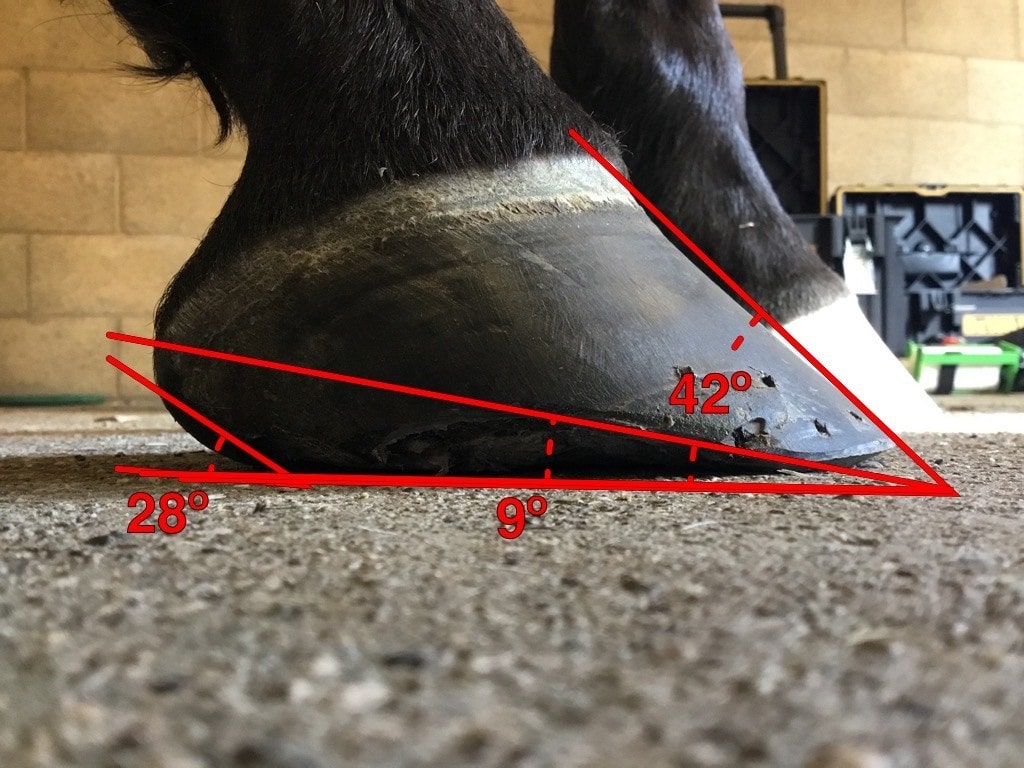
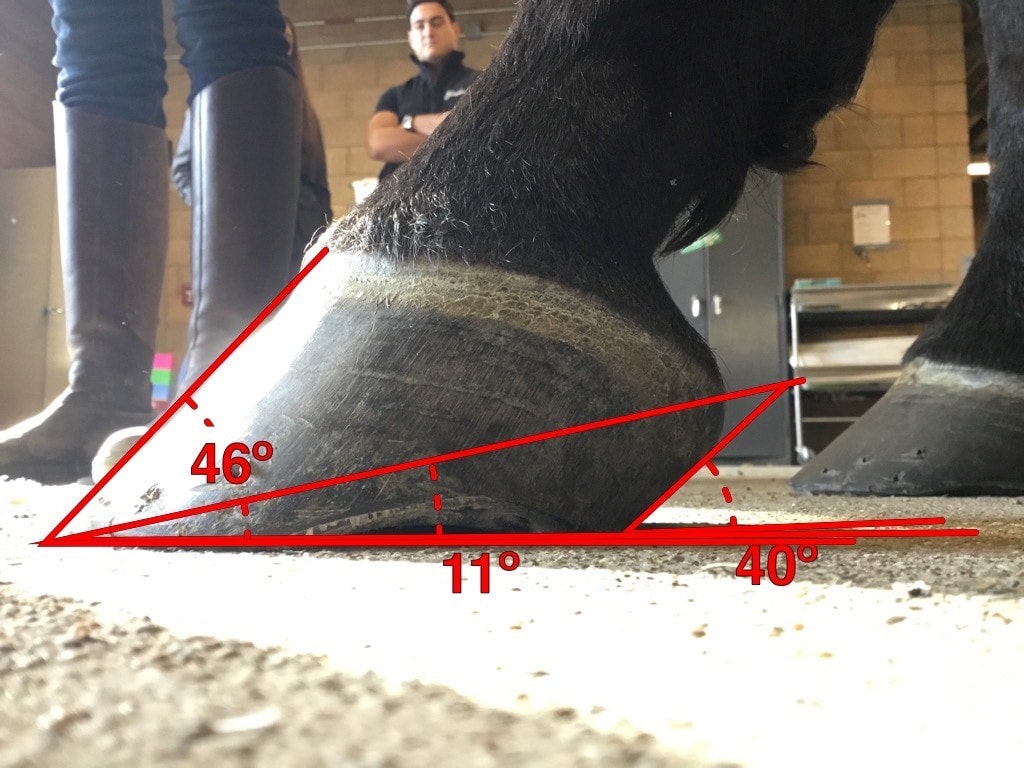
After Images
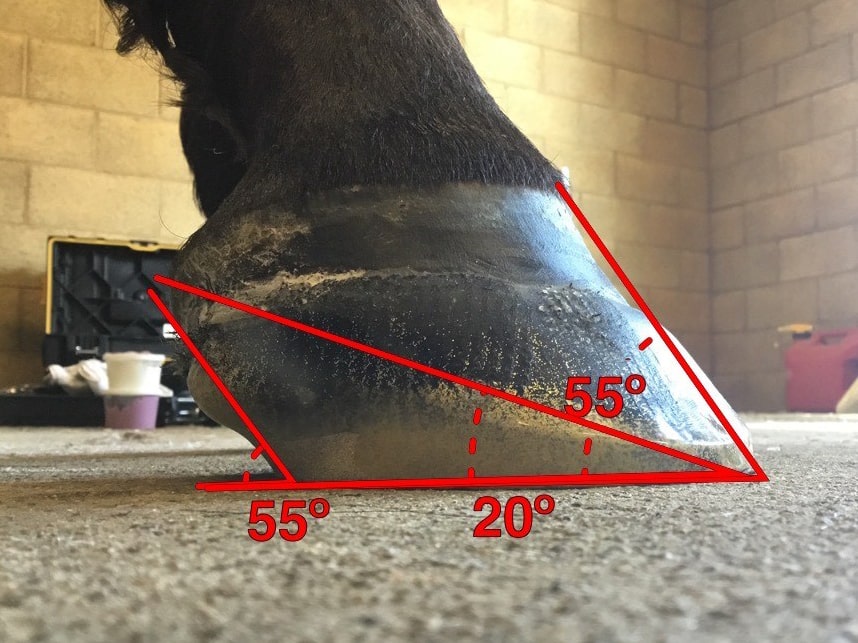
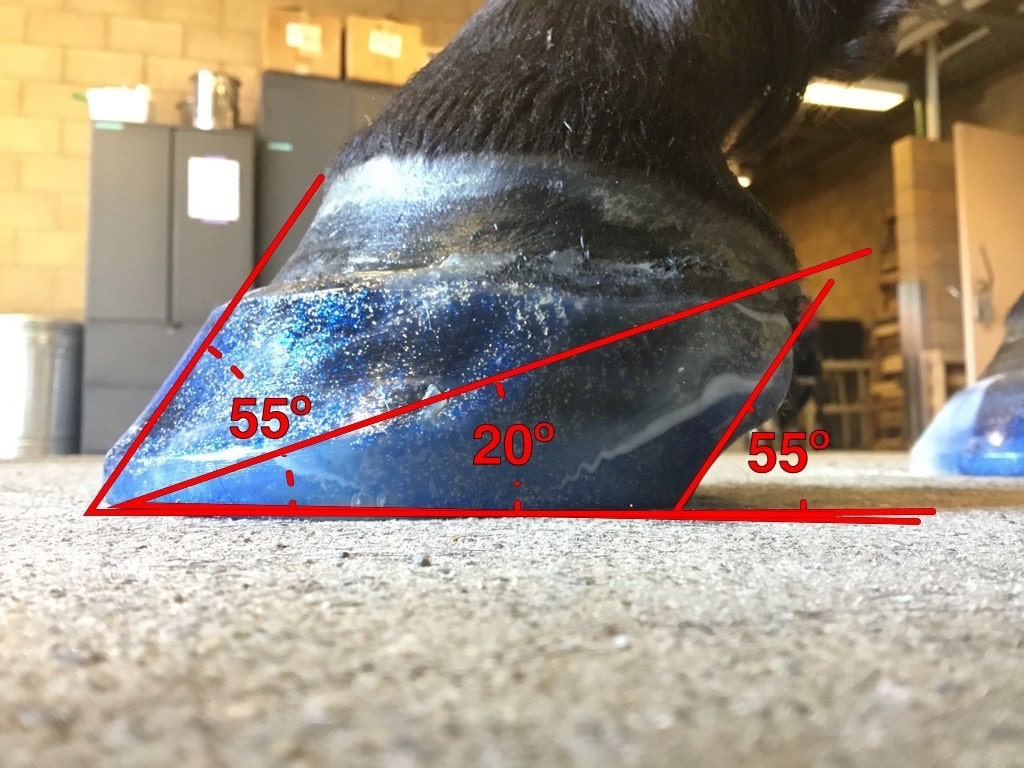
Besides correcting the horse’s hoof angles, FormaHoof also ensures the horse is on an even step, meaning both feet are at the same height and alignment, which will help to improve overall musculoskeletal health.
Special Case – Clubfooted horses
While long toes and low heels, broken forward feet and high-low syndrome are all very common problems in horses’ feet, a less common but still significant problem is a clubfoot. In the images below you can see a vast difference in the two front feet.
This horse has one severe club foot and a long-toed, flat foot on the other side. The showjumper had soundness problems and further problems in keeping shoes on. While maintaining a regular shoeing and trimming cycle is crucial for any horse, a club footed horse needs some extra care to avoid a contracted heel or tendon issues over time.
FormaHoof was applied to this horse to correct the posture of the low foot, to give the horse a toe and to correct the break over on the club foot. The horse could return to competing at 120cm level shortly after the application.
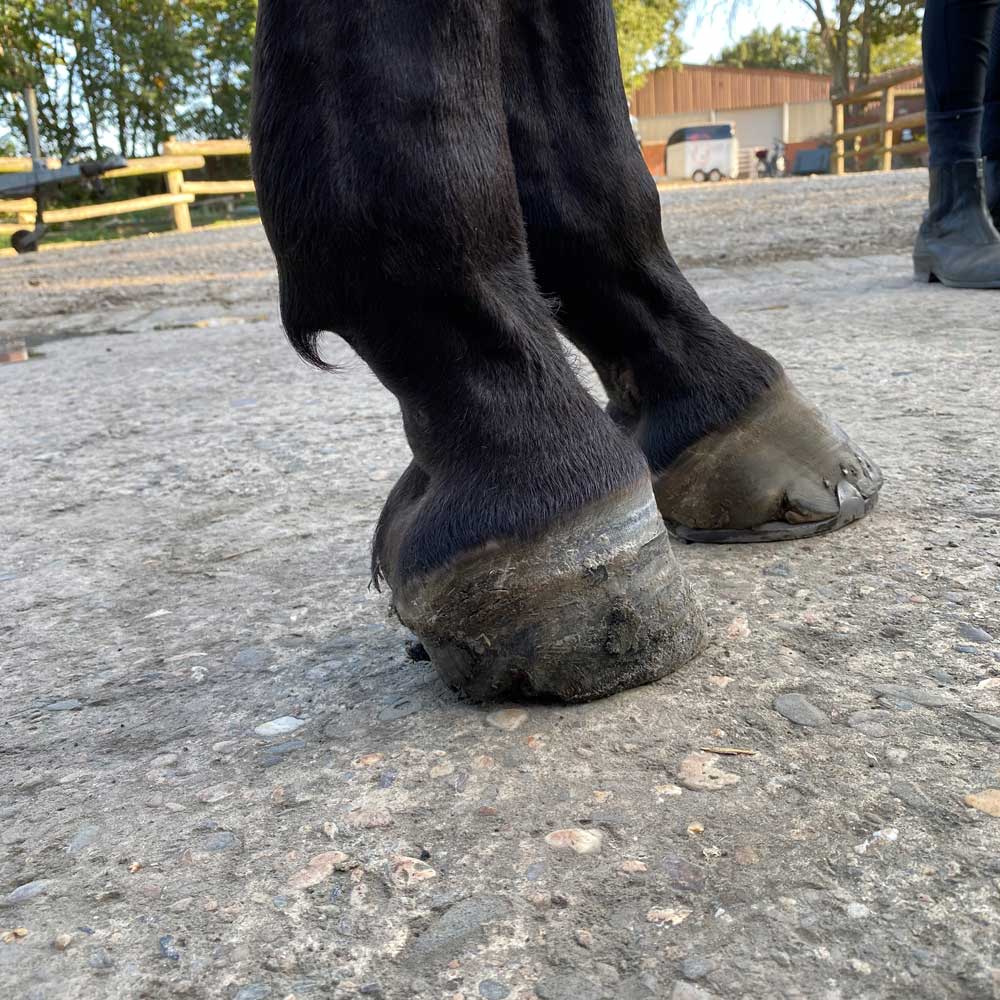

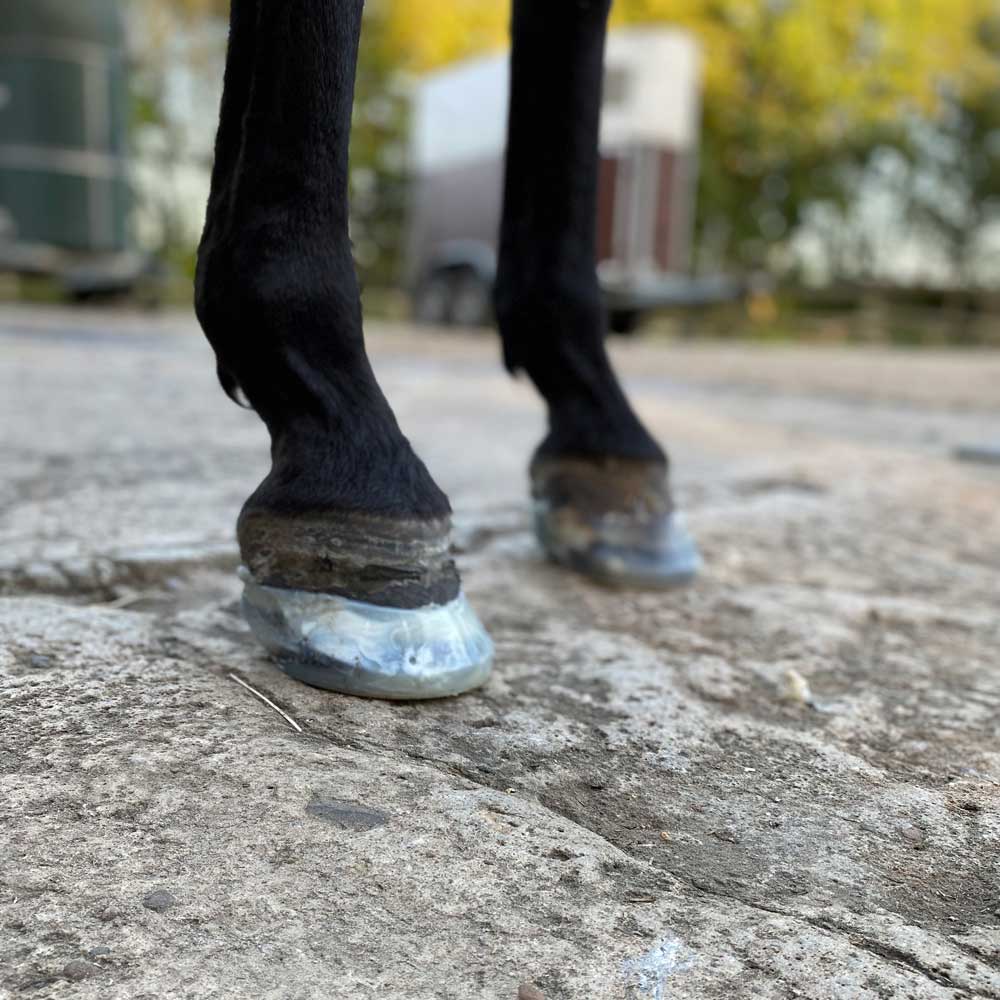
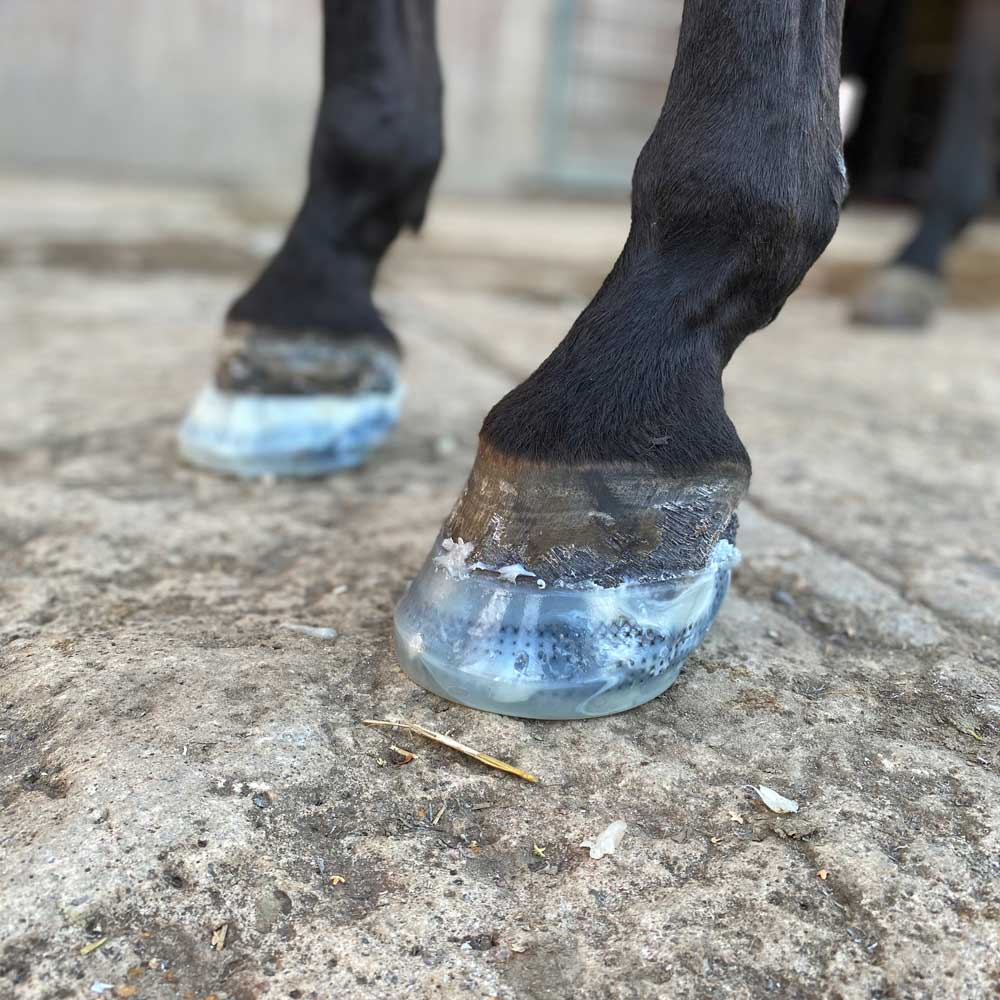
Correcting NPA In Horses
NPA stands for Negative Plantar Angle (hind) or Negative Palmar Angle (front). NPA refers to the orientation of the coffin bone, meaning that if the front of the coffin bone is higher than the wings on the back, the angle is negative (which it shouldn’t be).
With the support of FormaHoof, the negative angle can be corrected, the horse can be provided with maximum support and comfort during hoof rehab, and the growth of sole depth and heels enhanced.
Traditional Shoe
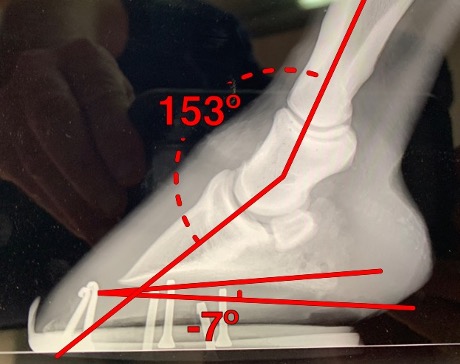
FormaHoof
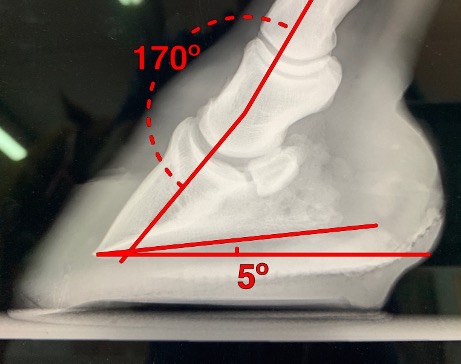
Please note, none of the images in this article are meant to give you a diagnosis for your own horse. You should work together with a trusted farrier, trimmer or vet and keep regular appointments to give your horses the best chance for healthy feet and perfectly aligned angles.
Tools To Measure Hoof Angles
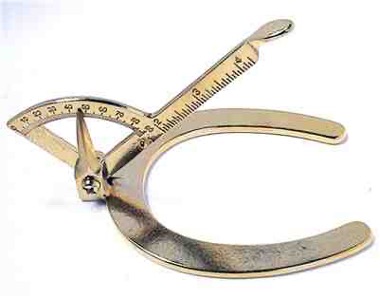
The hoof gauge is the most common tool and is used to measure and assess the angle of the dorsal hoof wall (at the toe). This handy measuring instrument also has a scale to measure toe length – from the tip of the toe to the coronet band. Although a hoof gauge is mostly used by farriers and veterinarians, as differences in hoof angles and toe length influence stance, gait, stride, flight pattern and arch of flight, it’s also an extremely useful tool for trainers and horse owners interested in their horses’ hoof care, comfort, functionality and performance.
Digital Tools
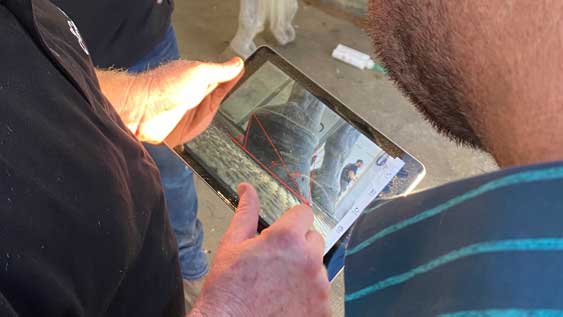
More modern methods to measure hoof angles include digital tools such as phone apps and more complex tools like the Metron Hoof System, which can be used with or without x-rays and is a common tool amongst professionals.
Most Apps can be used on a phone or tablet and allow you to set angles on the screen simply by using your finger to drop set anchor points for the connecting lines. There are plenty of apps on the market, including Yogi Sharp’s HoofmApp. However, for a generic and quick overview, a simple measuring tool app can help you to get angles drawn for your horse’s hoof.
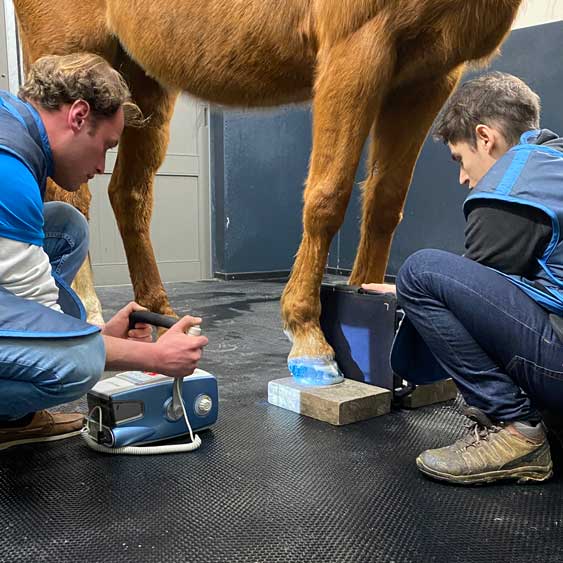
X-rays (Radiographs)
The ultimate to get a view of all angles are x-rays. However, not everyone will have access to or the need for x-rays for their horses. Radiographic images and diagnoses should always be done by a professional and qualified vet or vet technician. They will also help your farrier to read the imagery correctly and advise you on a treatment plan for your horse.
You may also be interested in these articles and videos:
Ask An Expert Video Series
Clubfoot corrections for breeding success
NPA correction with FormaHoof
Last but not least – It is always easier to correct and maintain horses’ feet from a young age than to fix long-standing imbalances. However, it is not impossible and FormaHoof gives you a tool to resolve and rehabilitate imperfect feet faster than with any other shoeing method on the market.
